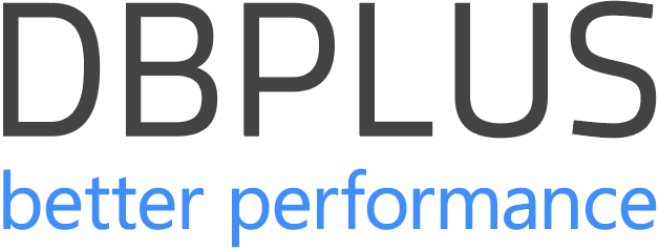There’s a peculiar habit among some database professionals occasionally to toss logical and physical replication into the same bin. One might as well say socks and shoes are the same because, after all, they both go on your feet, right? But as anyone who’s tried wearing socks in the snow can attest, similarities on the surface can hide a whole universe of differences between logical vs physical replication.
Blurring together logical and physical replication, or neglecting their differences can lead to inefficient data management strategies. Each method has its merits and ideal scenarios of use. Knowing just when to apply each one—understanding their unique roles in the spectrum of data management—helps avoid unnecessary workload, optimizes performance, and ensures data integrity.
Logical Replication
Logical Replication is a bit like having snapshots of data at specific moments in time.
It monitors modifications at the transaction level, and whenever there is a modification in the original database, be it an updated row or a newly inserted row, those modifications are recorded and transformed into SQL instructions.
What happens with the instructions next? They are subsequently transmitted to the designated database and put into effect in order to produce the identical outcome.
Typical Use Cases
- Data Warehousing: Involves regularly updating a portion of data from a live database to an analytical database without causing disruption to the overall system.
- Real-time Analytics: Offer current data for examination without having to duplicate the complete dataset.
- Cross-Database Data Sharing: Enable different systems to access the same data subsets without duplicating entire databases.
Physical Replication
Physical replication is more like copying a whole hard drive instead of duplicating individual files.
During this process, we create a precise copy of the database, with every byte replicated accurately to ensure data consistency across all systems. The most common way to do it is by using streaming replication, which involves transmitting database file updates to the replica, non-stop.
The effect is the duplicate that doesn’t cease to be a precise replica of the original.
Typical Use Cases
- Disaster Recovery: Swiftly assume control in case of failure, reducing downtime and data loss.
- High-Availability Clusters: Ensure that a backup database is ready to take over instantly with no data or integrity loss.
- Failover configurations: Keep an identical copy of the database for smooth failover in the event of hardware issues.
Logical vs Physical Replication: Key Differences
Flexibility
Logical Replication’s Flexibility with Data Types and Structures
Logical replication provides great flexibility in handling different types and structures of data. This technique enables databases to duplicate modifications on the logical level, focusing on the data itself (such as rows and columns) instead of the physical data storage. This method accommodates diverse data types and structures, allowing flexibility for various database schemas and different database management systems (DBMS).
Logical replication supports a wide range of data types, from simple integers and strings to complex JSON and XML formats, and allows for easy schema changes without disrupting the replication procedure. It also facilitates cross-platform replication, enabling data replication between different database systems, such as transferring data from PostgreSQL to MySQL, offering flexibility in diverse environments.
Physical Replication’s Constraints on Database Versions and Platforms:
In contrast, physical replication operates at a lower level, dealing with the binary data files of the database. This method essentially clones the entire database, making an exact copy of the database state. Physical replication is most effective when all nodes use the same database system and version, guaranteeing compatibility. However, updating a database system in this setup demands thorough preparation and often involves fully resynchronizing the replica, which can be burdensome and time-consuming.
Performance:
Impact of logical replication on database performance
Logical replication can impact database performance due to the overhead of processing changes at the logical level. Parsing and interpreting data changes require additional CPU and memory resources, which can slow down database operations, especially under heavy load. While logical replication is more efficient over the network by transmitting only logical changes, high-frequency and complex transactions can still result in substantial network traffic, potentially causing a small delay due to network speed and volume of changes.
Physical Replication’s Influence on System Resources:
On the other hand, physical replication generally offers better performance with lower CPU and memory overhead since it doesn’t require parsing changes at the logical level. However, it generates substantial disk I/O, impacting the performance of both the source and target databases. Physical replication helps ensure close to immediate data consistency between the master and the replica, which is advantageous for high-availability configurations.
Data Integrity and Consistency:
Consistency in Physical Replication:
Physical replication is superior in preserving data consistency by duplicating the complete database state, ensuring an exact duplicate of data, which is essential for situations requiring utmost data integrity. It allows swift failover and recovery with minimal data loss if the primary database fails.
Potential Conflicts and Resolutions in Logical Replication:
Logical replication, despite its flexibility, may face conflicts, especially in multi-master configurations where changes can occur on multiple nodes simultaneously. Conflict detection mechanisms are common in logical replication systems to address issues like primary key violations or data modification conflicts. Handling conflicts may involve strategies such as last-write-wins, timestamps, or custom conflict resolution logic, which can increase complexity. Without suitable conflict resolution, data variance may occur, jeopardizing consistency.
Advantages and Disadvantages: Logical vs Physical Replication in Databases
Advantages of Logical Replication
Granular Data Control: Logical replication offers fine-grained control over what gets replicated. You can choose specific tables, rows, or even columns, providing high customization. This means only the necessary data is transferred and stored, optimizing resources efficiently.
Selective Replication: Only replicate the critical data needed for high availability. This reduces unnecessary data transfer and storage, focusing on essential information without overburdening the system.
Suitable for Complex Query Environments: Perfect for environments with complex queries and varied workloads, logical replication supports schema changes easily. It accommodates database modifications without disrupting the replication process. Additionally, it works across different types of databases, making it ideal for diverse environments.
Disadvantages of Logical Replication
Higher Complexity: While offering great flexibility, logical replication can be more complex to set up and manage than physical replication. It involves sophisticated configurations and maintenance efforts.
Potential for Data Conflicts: In multi-master setups where changes can occur on multiple nodes simultaneously, there is a risk of data conflicts. Resolving these conflicts requires advanced conflict resolution mechanisms, adding to the overall complexity. Handling primary key violations and data modification conflicts necessitates sophisticated logic, which can be challenging to implement and manage.
Advantages of Physical Replication
Simplicity and High-Fidelity Replication: Physical replication is straightforward, replicating the entire database state to ensure an exact copy. Setting up and managing it is easier compared to logical replication. This technique ensures that the primary and replica databases are consistent and have high fidelity by replicating the database bit by bit.
Reduced operational burden: Physical replication requires less CPU and memory usage, leading to lower operational overhead.
Disadvantages of Physical Replication
Lack of Flexibility: Physical duplication is more restrictive, necessitating the similarity or near-similarity of the source and destination systems. Both the main and duplicate databases must match in version and configuration, reducing flexibility in mixed environments.
Requires Identical Systems: Upgrading the database system can be more challenging with physical replication.A full resynchronization of the replica is frequently needed, causing delays and complications. The requirement for identical systems adds difficulty to the upgrading process, reducing its flexibility in adapting to alterations and enhancements in the database infrastructure.
Choosing the Right Replication Method: Logical vs Physical Replication
When choosing the appropriate replication technique for your database, it is important to consider a range of factors. Here is a detailed analysis to assist you in determining if logical or physical replication is the most suitable option for your requirements.
Factors to Consider
Cost
- Logical Replication: If you just want to replicate a part of your data, this method could be a more cost-effective choice. However, the increased complexity may result in higher costs for both the initial installation and ongoing upkeep.
- Physical replication: It is usually more cost-effective to establish and handle, however, it may necessitate additional storage and bandwidth as the complete database is being replicated.
Technical Requirements
- Logical Replication: Requires more sophisticated setup and configuration. Go for it if you are comfortable with tweaking and fine-tuning their database systems.
- Physical Replication: More straightforward to establish and demands less technical expertise. It is more like a “configure it and then disregard it” technique.
Data Needs
- Granularity: Logical replication allows for selective data replication, which is great if you only need certain tables or rows.
- Uniformity: Physical replication ensures an exact copy of the entire database, maintaining uniformity across systems.
Scenarios Favoring Logical Replication
Diverse Data Environments
If you are overseeing databases on multiple platforms or require data replication between different systems, logical replication is a flexible tool at your disposal.
- Cross-Platform Compatibility: Logical replication can mirror data across various database systems, like from PostgreSQL to MySQL, kind of like a universal translator.
- Selective Replication: Only need specific tables or rows replicated? Logical replication allows you to cherry-pick the data, reducing unnecessary load on your network and storage.
Dynamic Schema Changes
For environments where the database schema changes frequently, logical replication is all about that flexibility to adapt without causing disruptions.
- Schema Evolution: Easily adapt to changes in schema, like adding new columns or changing data types, without the need to reconfigure the entire replication setup.
- Complex Workloads: Perfect for databases with complex query needs and varied workloads, guaranteeing that your replicas are consistently updated with the most recent modifications.
Partial Data Replication
Logical replication provides precise control when replicating only a portion of your data.
- Granular Control: It allows you to replicate individual sections of your database, like specific tables or columns, to cater to the requirements of various departments or applications.
- Optimized Performance: By duplicating only essential data, you can reduce the strain on network bandwidth and storage resources.
Scenarios Favoring Physical Replication
High Availability Setups
For systems that demand high availability and minimal downtime, the choice between Logical vs Physical Replication should be rather directed to the latter.
- Failover abilities: If the main database goes down, physical duplicates can quickly step in to maintain operations with minimal data loss.
- Exact Copy: Creating a physical replica ensures that your database is duplicated exactly, making it very dependable for important data.
Simplicity and Performance
If you prefer a straightforward setup with robust performance, physical replication is a practical solution.
- Ease of Setup: Setting up physical replication is usually easier and requires less technical knowledge, making it simpler to implement and upkeep.
- Reduced Expenses: Physical replication operates at the binary level, resulting in decreased CPU and memory utilization in comparison to logical replication.
- Real-Time Updates: Ensures near real-time data consistency, crucial for applications requiring immediate data availability.
Homogeneous Environments
Physical replication excels in environments where the same database system and version are used across all nodes.
- Uniform Environment: Both the primary and replica databases must be identical or nearly identical, ensuring compatibility and reducing the chances of replication issues.
- Simplified Upgrades: While upgrading may still require careful planning, the process is more straightforward when dealing with uniform systems.



